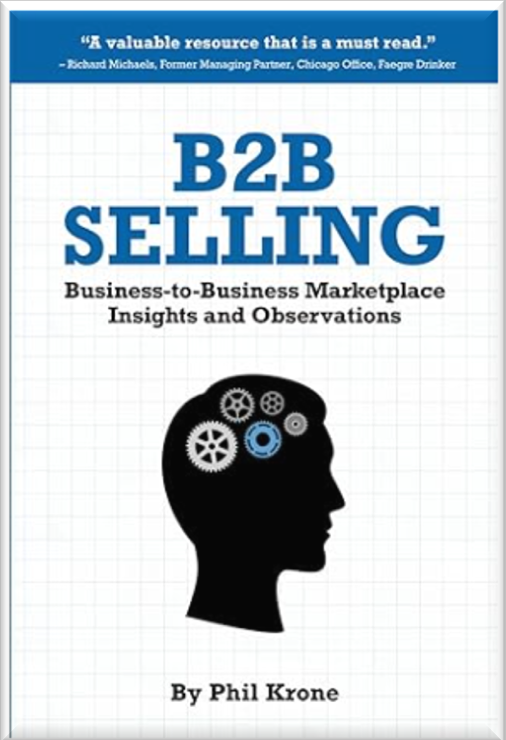The Five Levels of Marketing - Level Two: Putting Data and Information to Work
August 14, 2025
Tracking key types of data each month provides insights that can build a highly productive marketing plan.
In a prior Productive Insights blog, we introduced our Five Levels of Marketing model. This column will focus on Level Two, where we see a range of data and information that can be used to leverage the sales effort. Before getting into details about Level Two, we’ll share a story that will help illustrate the Five Levels.
Suppose that 50 years ago you were a slide-rule manufacturer. If your objective was to increase revenues you could take action on each of the levels.

Level One: Sales. You might decide to hire more salespeople or improve the sales results of your present team by training them in consultative selling skills and building a custom sales process.
Level Two: Information/Data/Analytics. Let’s assume you’ve discovered through research that a very high percentage of slide rules are purchased from high school and college bookstores around the time school starts each year. That piece of intelligence can help leverage Level One by pointing the sales team to the identified target, campus bookstores in this case. You also learn that a small percentage of slide rules are graduation gifts. This information might direct product development as you will see below.
Level Three: Tactical or Campaign. Perhaps you run a tactical campaign. Every week you mail a promotion to school bookstores (yes, via snail mail here) and let your salespeople know which schools receive the mailing each week. This heads-up further leverages your sales team’s time.
Level Four: Marketing or Program. Pause here and segment the market based on buying motive. Then develop a targeted marketing model for each segment with product attributes: Basic for students (functional yet low in price); as a high-quality gift for business managers, with a leather case and a higher price; and professional for the engineer or scientist using the slide rule on the job every day.
You could go along just fine investing in any of the first four levels until the electronic calculator was introduced. At that point your market could be significantly impacted, and the survival of the firm could be at stake since future unit sales will now be under attack.
Had you been marketing on Level Five: Vision, however, you probably would have anticipated slide rules being replaced by calculators and taken strategic actions. That might mean selling the company or partnering with an original equipment manufacturer of calculators (you know the market; they know the product). A third strategy could be taking control of the product yourself either by buying and reselling it or by manufacturing it.
To determine which end of Level Two you are marketing on now, ask yourself how you use data and information in the marketplace or within your firm. Here is a short list of possibilities:
- Buying motives for your product or service learned from surveying current clients, prospects, and lost prospects. We find our clients can identify only about half the reasons customers buy from them.
- Data you collect as part of providing your service that can be gathered, analyzed, and sold into the marketplace. Perhaps your entire business becomes collecting data and re-selling it.
- Information such as formulas that help your prospects understand the cost of the status quo. We helped a client develop an algorithm to calculate the cost of medication waste at senior living communities. Our client offered a significantly more efficient packaging system that saved money but needed a way to convince their prospects.
- Our formula used rules of thumb related to average prescription prices, frequency of prescription changes, number of skilled nursing beds, and types of packaging. Using the algorithm with data supplied by our client’s prospects, the amount of medication wasted by packaging could be calculated quickly on the spot and compared with our prospect’s packaging costs. This type of data creates value for prospects. In this case, they know that medication waste is costing them money, but they typically don’t know exactly how much.
- Information that each month tracks your current 12-month total sales divided by the prior 12-month total sales. For instance, divide the total sales for the 12 months ending September 2024 by the 12-month total sales ending September 2023.
- Do that every month to remove seasonal differences and put that data into a visual to illustrate your real growth rate. This straightforward way of looking at sales can be used both for forecasting and for inventory control. Optimizing those two categories improves customer experience and can drive growth.
Finally, be sure to keep these Five-Level Model takeaways in mind:
- The fastest way to increase revenue in the short term is to improve the sales function on Level One. This means stronger consultative selling skills, the development of custom sales processes, and good coaching.
- Effective use of Level Two
information can significantly leverage your salespeople’s time and
boost their productivity.
- The most efficient way to obtain competitive advantage is to market one level above your competition. If they are marketing on three levels, you differentiate by marketing on four.
- The goal is to gain sustainable competitive advantage on all five levels and at the high end of each one.
- There are many ways to market successfully using the Five Levels Model. The first step is to identify which level you’re on now and how well you’re doing. Improve on that level and test other levels as it makes sense to find the best combination for your business.
We have an extensive list of other types of data that can be used to market at the higher end of Level Two. Just get in touch if you want to discuss additional data points that can help drive revenue. We’re at
pkrone@productivestrategies.com or 847-446-0008 Ext. 1.
Even more practical, productive sales and marketing ideas and advice can be found in Phil’s new book:











